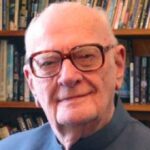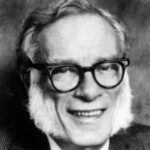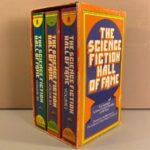Clicking on the following links or images will take you to the science fiction collections covered in this section:
Commentary:
It is interesting to note that Frankenstein, which could be called the first science-fiction novel ever, was written by 20-year-old Mary Shelley who had no science background. However, the Sci-Fi genre did not really take off until nearly half a century later, when the French writer Jules Verne entered the scene.
Verne was a master of science fiction, virtually creating the genre from scratch and making it wildly popular. He was a true visionary, and many of his ideas (such as airplanes, submarines and rockets) became a reality long after his death. Verne was followed by the British writer H. G. Wells, who carried the baton until a new group of Sci-Fi writers emerged in the 1920s and 1930s.
In the beginning, these new entrants to the world of science fiction mostly published their work in pulp magazines which also included other subject matter that was lurid and sensational. By the late 1930s, however, Sci-Fi emerged as a more respectable form of writing, and the quality of the stories took a giant leap forward. Two giants of the Sci-Fi world who emerged around this time were Isaac Asimov and Arthur C. Clarke. They are my two favorite Sci-Fi authors, so I have given them their own sections.
Isaac Asimov was one of the most prolific, creative and versatile authors who ever lived. He wrote or edited over 500 books covering a wide variety of genres, including science fiction, mystery, fantasy and non-fiction. Asimov had an easy-to-read writing style and his stories had interesting characters and plots, while having grand philosophical themes and backgrounds which fill you with wonder. A great example is his Foundation series of novels. For many of his short stories, Asimov added his personal commentaries when the stories were later included in collected editions.
Arthur C. Clarke, along with Isaac Asimov, was one of the two grand masters of science fiction. Clarke had a soaring imagination but his stories were generally grounded in reality and stayed in the realm of possibility. There was a lyrical quality to his science-fiction stories, so he was rightfully called “the poet laureate of the Space Age.” Clarke co-wrote, with director Stanley Kubrick, the screenplay for 2001: A Space Odyssey, a landmark science-fiction film and one of the best films ever made. Clark concurrently wrote a superb novel of the same name, as well as many other well-known novels and short stories.
In some ways, Clarke’s Sci-Fi writing career paralleled Asimov’s. Both started writing short stories in the 1930s, both gained popularity in the 1940s, and both started writing novels and became famous in the 1950s and beyond. Both had their own professional careers outside of writing science fiction (Clarke was an inventor and astronautics expert, while Asimov was a biochemist and professor), and both were recognized for their ability to foresee the possibilities of human innovation and explain them in clear terms to non-scientific readers.
The Sci-Fi genre also encompasses dystopian novels which generally have a higher level of literary quality than the typical Sci-Fi novel. Some examples of this are Brave New World, Nineteen Eighty-Four and Fahrenheit 451. Over time, the percentage of Sci-Fi novels which are dystopian has been increasing, and these days dystopian stories constitute a large portion of science-fiction works. I don’t particularly enjoy this kind of fiction, so you will not find many recent Sci-Fi stories on my lists.






